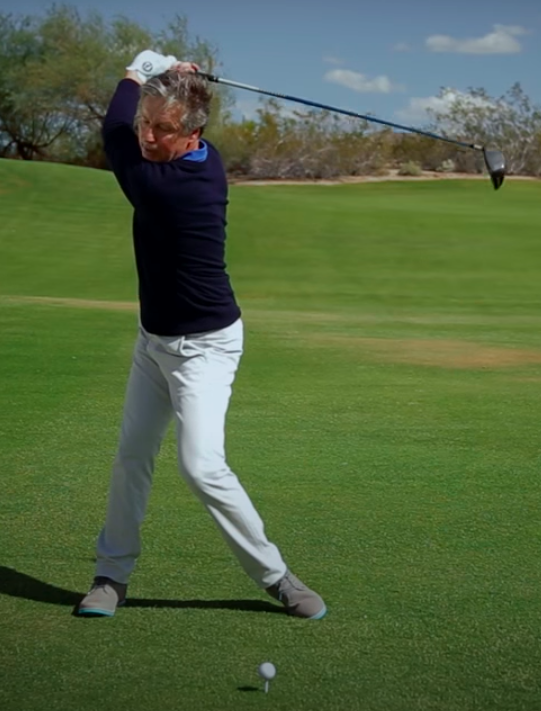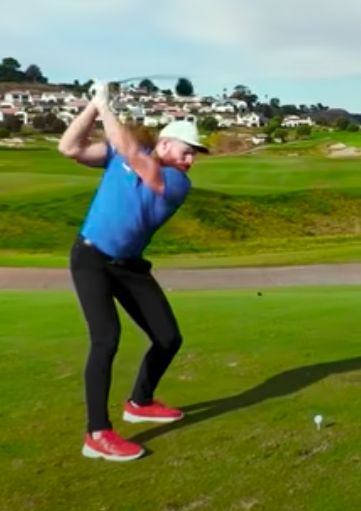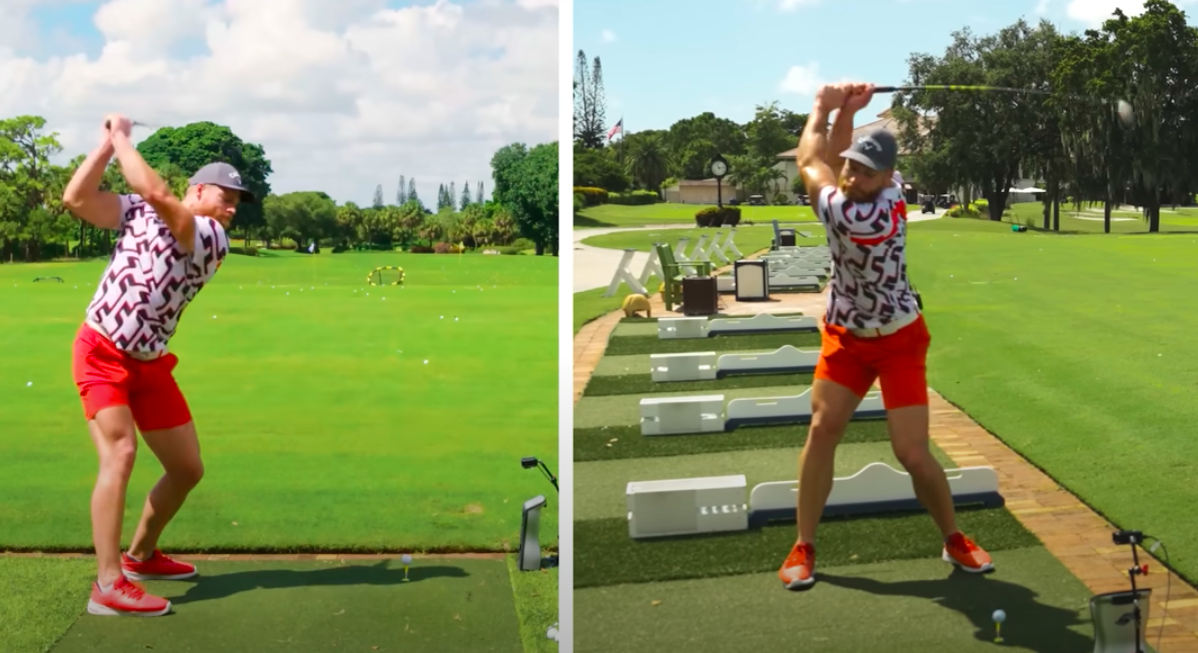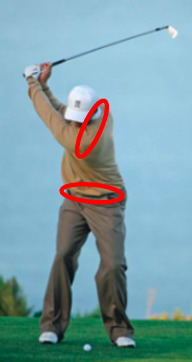When Idiosyncratic Becomes the (Unchallenged) Norm
Golfers of all Skill Levels Lose Out
A well-known golf teacher messaged me this question: “Have you ever done a thorough study about my favorite subject, heel up/flat foot (i.e. lead heel up versus flat in the backswing)? Do you know if one has been done and I could check it out?”
He also sent me a couple of videos on the subject that explained his topic of interest better – https://www.youtube.com/watch?v=RoZHlBhdb2E and https://www.youtube.com/watch?v=KKbA3f6S4c0
Well, the answer, fellow golfers, is that not every question one has will have been researched, so the next best thing to do is this:
1. First find out what golf coaches or TV analysts believe the reason for or against making a particular move is
2. Then look for any research on the precise golf question asked. If there is not any,
3. Discover whether any research related to the golf topic in a more roundabout way exists
4. If not, look for any non-golf research recommending a similar movement in some other sport or human activity
5. And then, finally, if nothing can be found, surmise from the design of the body and brain what makes and does not make sense in science. This final step is important because again, not every question anyone has ever thought of might have been researched!
With a basic google search, naturally the first thing to show up was a video by Brandel Chamblee from seven years ago. (https://www.youtube.com/watch?v=JW_mjyWWeg0 )
Naturally? Simply because the article was written up in a golf magazine and because Chamblee had, at the time, just published a book titled ‘The Anatomy of Greatness’. In the book he discussed the secrets of the moves of the greatest players of all time (and, no surprise, the left heel is discussed).
Some excerpts from his video: “There are two ways to generate speed in a golf swing – with gravity and with muscles.” He adds that when you limit the amount you turn on the backswing, say by resisting with the lower body, you’re not going to turn as much and the hands are going to be shorter than where they’d be optimally. By doing that you are limiting the amount of time you can use gravity, then you’re going to put more pressure trying to speed things up with your muscles, and all that is going to cause tension.
Chamblee wants golfers to get as much hip turn as they can. He suggests they get the left knee behind the ball and get the left heel off the ground (picture below). This will help a golfer to create as much distance as possible from the golf ball to the top of the hands, with the hands going as high as possible. This, according to him, allows golfers to generate more speed, as they’re now in a great position to allow gravity to help, and they have ‘all the time in the world’ to move in to the golf ball.

In a similar vein (the second item to show up in the google search!), according to Tom Stickney II on GolfWRX (https://www.youtube.com/watch?v=A-qh2j5xQlY ), for less flexible players it allows a bigger hip turn and thus a bigger shoulder turn, and that allows golfers to keep the club in the air longer which gives them more time to create more speed.
Wayne DeFrancesco (one of the two videos my friend the pro sent me) does a very detailed analysis of golfers of the vintage of Walter Hagen and Ben Hogan. He says he has no idea why sometime in the 1980s people were told to keep their lead heel down in the backswing. Before that time top golfers lifted the lead heel in the backswing – he then proceeds to read out a really long list of top players who lifted their heels.
DeFrancesco believes it is a much better idea physically (stress-wise) and athletically (to feel more natural rather than restrictive). He shows different points in Walter Hagen’s swing where the heel lifts and then drops. When the heel hits the ground, he says, it has to hit in a certain way so that the lead leg can move out of the way.

Ben Hogan’s heel, reports DeFrancesco, came down in a different spot than when it went up, with the foot being ‘straighter ahead’ (pointing more towards the target line rather than toed-out as it was at address). As the lead heel planted itself down, Hogan’s lead knee made a ‘rounded arc’ and then ‘cut back’ (as described by DeFrancesco) and thus the heel (and foot) got pushed forward a little bit and ended up in front of the spot it started from.
What does a lead-heel lift do for the golf swing according to DeFrancesco? If the heel comes up, the motion is more like walking, it’s free-er. With a raised heel, the hips and knees can stay more level but if the foot is in the ground, the tendency is for the lead knee to drop down (lead knee buckle) and the hips to unlevel (right hip higher) and getting stuck on the lead knee and lead foot and retarding the rotation.
A more ‘modern’ golf instructor (https://danbubanygolf.com/todd-sones-my-holy-grail-for-clubhead-speed/ ) says pressure and ground force are really what are important here. “If you just turn your hips as far as you can, lifting your heel as high as you want, you can expect a lot of mis-hits and wayward shots.” He adds, “Centered, solid, and consistent contact plays a major part in distance, and by the way, greater distance at the cost of ball control will not yield lower scores.” He also believes that over-rotation of the hips and blatantly lifting the lead heel for many players will lead to loss of ball control even if there is a power gain.
A similar sentiment comes from a Pete Styles video (https://www.youtube.com/watch?v=T4eHAFhwSfk). In general he believes that lifting the lead heel could lift the ‘anchoring point’ and cause the body to ‘wander off’.
So one could go on and on and add up how many golfers and golf coaches are ‘for’ or ‘against’ the motion. However, it is highly counterproductive, mainly because the ideas presented are subjective and based on a few observations that are neither backed by research nor science.
Additionally, making such movements as ‘lead heel lift’ are a part of golf-fashion – a collection of swing ideas that change over time. Such changes have taken place more frequently in the past few decades as there is ever-increasing access to equipment with which to measure things.
My friend tried also to convince me to his side of the argument by adding that 90% of world long drivers raise the lead heel to gain more distance. So naturally the man to research was Martin Borgmeier. The reason being that he truly tries to get to the bottom of everything he does, attempts to get the best information, and then imparts it intelligently in the many videos he appears to enjoy churning out.
Borgmeier does not always raise his lead heel – perhaps he keeps it planted for better consistency such as when (https://www.youtube.com/watch?v=pWhz8h7hggA ) his long hair is at stake? Such as in a recent match against Fat Perez (which he lost)?

Fat Perez wins:

In this video (https://www.youtube.com/watch?v=0fM_4qmE8q4 ) he does AND does not lift his lead heel. Moreover, he says he does like a heel lift especially for seniors, as it allows the body to become ‘taller’ going back, and opens up much more range of motion in the hips and the thoracic spine.
Borgmeier adds that how much a golfer wants to do that on the golf course is trial and error. Even his ‘foot trigger’ has changed in two years, so maybe, like all younger golfers, he enjoys the experimentation and, after all, in his sport of long drive he only needs one of six shots ‘in the grid’ to be OK!


From a performance perspective
Let’s analyze what the coaches have said first of all – some of it makes sense in science and some does not, and, as mentioned earlier, all of it is mainly subjective – lacking any evidence.
- The main purpose for lead heel lift according to most, is for greater pelvic rotation. For Chamblee the ultimate purpose of greater pelvic rotation is high hands. With respect to extra pelvic rotation, is that even necessary? Excessive pelvic rotation is not easy to undo in the downswing, because it involves large, slower-moving muscles. Moreover, the pelvis and shoulders are connected by very powerful core muscles so when the excessive pelvic rotation is made (backswing) or undone (downswing), it pulls the shoulders and thus the arms along. This might result in faulty directions of arm movements.
- With respect to the arms and hands that Brandel Chamblee wants to be very high. That is not always possible, and can be compensated for by width and depth of arms and hands, which are much easier to attain. For instance, many older or weaker people simply do not have the strength to hold their hands up high against gravity, regardless of the quantity of pelvic rotation. One case in point being Jack Nicklaus. His swings of recent years are much narrower and shorter than in his prime when his hands were very high. Moreover, try this. Get your lead leg and heel into the position advocated by Chamblee. Then simply place the heel back on the ground. If your hands remain as high (which they do), know that it is other factors preventing high hands during the backswing.
- It is absolutely ridiculous to do what the pros do because they could just as easily get their results DESPITE not BECAUSE of the heel lift. They all have very different backswings and somehow manage their timing to arrive at the ball from a suitable direction AND have the speed and strength to pull off a re-routing from the top to impact – most do not!
- Golfers copying other golfers might not have the same compensatory downswing movements from a specific backswing. The lead knee dropping and the trail hip lifting that DeFrancesco observes are not related to the position of the lead heel and can easily be trained out of a golfer – especially if the golfer is told not to move the legs at all! Leg movements merely serve to displace the body while it is the pelvis and shoulder motions (the only body parts to be discussed in the much-revered kinematic sequence) that produce the early speed that is eventually imparted to the club.

- Even though for golfers who have been raised making this move it seems more natural, there are ankle, knee, and hip/pelvis motions to be undone from the top, all of which can change based on where precisely the pressures in the lead foot are, once it replants. Different muscles will be able to use the resistance of the ground depending on where the foot gets the best purchase/traction for leg and thigh muscles to maximally contract off. This leads to inconsistency when timing is messed up. AND timing in golf is very ephemeral – here today and gone tomorrow.
Next, what does the research tell us? There are two interesting pieces of research, even though neither one directly answers our question.
From an old paper titled ‘The effects of wearing high-heeled shoes on pedal pressure in women’ (Snow et al., 1992 – pedal just means foot) comes the information that as participants walked on increasing heel heights, there was greater maximum peak pressure under the metatarsal heads (area shaded red in the picture below) in the forefoot and the pressure got to that part of the foot faster as well. What would you do with so much pressure on the front part of your foot in the backswing? Is so much hip rotation, at the cost of inconsistency in direction and position of lead heel replant useful?

A fairly new research paper, ‘Foot insole pressure distribution during the golf swing in professionals and amateur players’ ((Navarro et al., 2022) measured foot pressure via shoe insoles in 55 Spanish golfers who were pros or had a medium (≤15) or high (>15) handicap. The paper is an interesting read (https://www.mdpi.com/2076-3417/12/1/358 ).
The relevant results: during mid-backswing the inner (medial) part of the lead heel had maximum pressure recorded on it compared to that at any other part of the entire swing. At the top of the backswing, the highest lead foot pressure was on the medial metatarsal and the medial heel. Moreover, lower handicap players had higher pressure on the lead heel during the backswing than higher handicappers.
All this is evidence that the heel did not leave the ground for this particular group of Spanish golfers. Once again, an indication of heel rise not being a determinant of golf skill or club speed and being a ‘fashion’ that comes and goes.
And, finally, forget all the science and simply consider these two scenarios:
- A fisherman is sitting in the back of a pickup truck and must cast his fishing rod into a tiny pond as the truck speeds by it
- The same fisherman is standing as still as he can at the bank of the pond and casting his rod.
Which scenario is more likely to get him his fish? The one with less motion during a fast-paced movement!
The main reason why the classic swing (more free-flowing) is better than the modern one (feet planted, more compact) from a performance standpoint has nothing to do with the lead heel, and everything to do with the fact that at the top, the hips and shoulders are level, not practically perpendicular as in the modern swing (see picture below). If the classic position was to be combined with completely stable legs, the perfect backswing would result.

From an injury perspective
As Chamblee often says, golfers of earlier years were less injured that modern golfers. He believes that the classic swing puts less pressure ‘down the back’, and allows the middle of the back, the thoracic part of the back, to turn.
What he says is true. It is especially applicable to today’s professional golfers who not only swing at higher speeds, but are more dedicated to a strict adherence to the modern swing than regular golfers are! In the modern swing, with the greater forward flexion at address, combined with the hips moving on a more horizontal plane and the shoulders on a more vertical one going back (picture below – classic on the left, modern on the right), the back and thigh muscles have to contract forcefully to keep the back and knee upright against the pull of gravity. This creates greater compression and thus greater chance for injury. Additionally, the vertical shoulder plane of the modern swing increases downswing side bend. Golfers are then forced to rotate the pelvis aggressively to prevent the arms from moving off plane in the downswing.

A seminal review 2008 paper (https://www.sciencedirect.com/science/article/abs/pii/S1529943007006997 ) by three medical doctors (naturally more concerned with injury) also compared modern and classic swings and their illustrations (above) help to explain the differences between classic and modern very well.
The authors found from their research that the more upright posture of the classic swing is less deleterious than the greater forward bend of the modern. They also found the X-Factor (maximal shoulder with minimal pelvic backswing turn) of the classic swing to be problematic.
In conclusion, the modern swing might create more injury but increases ball distance because the golfer, like the fisherman, is ‘there’ when the club arrives at the ball. The classic swing requires perfect timing if the ‘fishing rod’ is to land at a precise location and, with the feet sliding everywhere along the ‘dance floor’, how can a golfer making the movement gain good purchase against the ground for muscles to contract forcefully off?
The Minimalist Golf Swing is a combination of the best of the classic and the modern. It has the more upright posture and the horizontal shoulders and pelvis of the classic swing. However, because the legs are not moved at all, it has the look of the modern swing’s X-Factor without the excessive torsion. It uses the free flowing motion of the arms to allow the torso to be moved (through many interconnected shoulder and torso muscles) as much as required. And rest assured, for anyone who describes it as a merely ‘arms’ motion, they need to understand more about the anatomy of the body’s powerful shoulder and core musculature!


